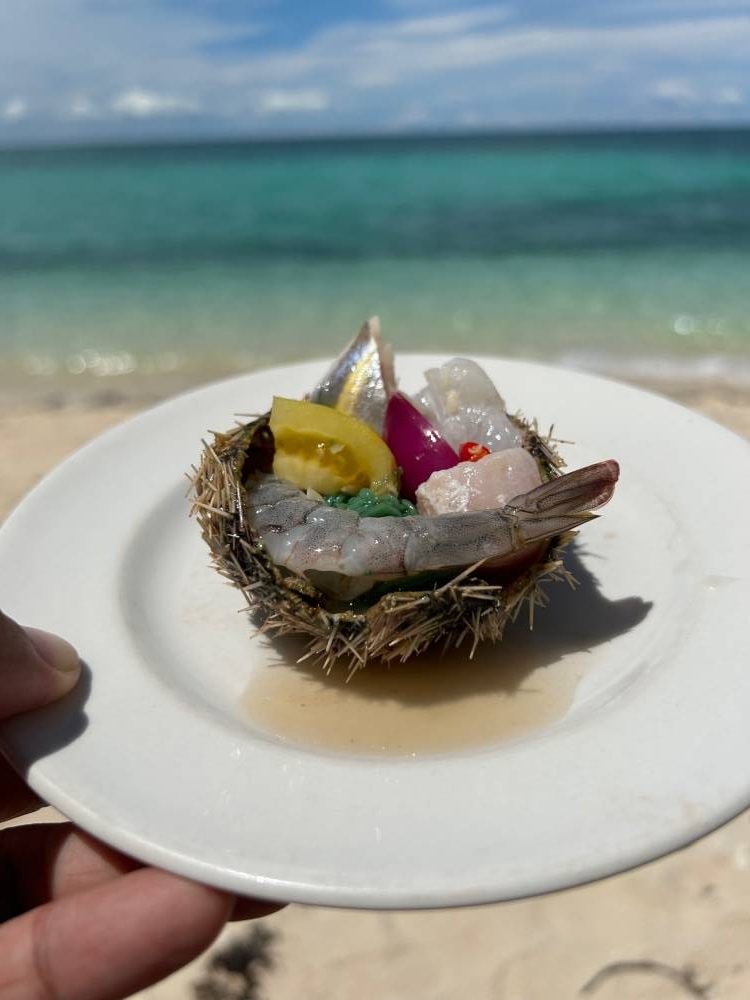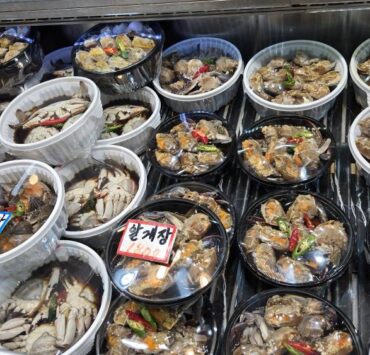Siargao hot spot champions the humble ‘kinilaw’

Stockbroker David del Rosario had been working in finance for a decade when he felt the urge to shift careers for personal gain. “I was unhappy and felt empty so I decided to pursue food. I quit my job when I turned 30 and went to New York to attend cooking school,” he said.
Food has long played a role in his life. As a kid, he chose to tune in to cooking shows instead of cartoons. Growing up, he didn’t stand much chance in the kitchen as they had maids preparing meals for the family. It was only when he became independent that he started scratching the culinary itch and cooked food for friends as a hobby.
For his thesis in Restaurant Management, he thought of championing the humble kinilaw, because “it is a super underappreciated dish, yet it’s such a great representation of our country.” Being an archipelago of 7,000 islands, the Philippines has some of the most biodiverse produce, and the precolonial kinilaw dish is a great way to showcase not just the freshness and variety of our seafood, but also to highlight our penchant for sour flavors. Hence, the idea behind Cev was born. He came home with the intention of turning the concept into reality, but first, he had to look for the perfect location.
“It was supposed to be in El Nido because I like going to that part of Palawan,” he recalls. “Then I went to Siargao in 2016 and I realized there was bigger potential there. I also love to surf. From a business standpoint, there would be a lot more opportunities because I could see it exploding.” True enough, in 2017, Siargao became a hot destination after direct flights from Manila became available.
Cev started inside a motorcycle and surf bar where Del Rosario shared space with his owner friends. Then the pandemic happened, which forced him to move to a smaller area, operating on a sole counter, right by the skateboard park. He did that for eight months until December 2021, when Supertyphoon “Odette” (international name: Rai) devastated the island.
He once again had to build from scratch, and for his third location, he opted to go bigger, taking over a former staff house that was torn down. It’s a 100-squaremeter restaurant with lush foliage by the entry and a dining area that
can comfortably seat 60.
As the name suggests, he serves ceviche, but mainly as a lure to foreigners. The servers then introduce them to kinilaw, which, more often than not, ends up not only delighting guests but also blowing their minds.
Fresh catch
For both menu categories, he only uses the fresh catch of the day. There’s the best-selling Pacifico composed of roasted corn, fried and boiled sweet potato, and coconut milk leche de tigre; the Santa Monica, with fried octopus, pumpkin mash, toasted peanuts and roasted bell pepper purée; and the Daku with grilled shrimps, lettuce, and his signature chili garlic oil.
Among his kinilaw options are the General Luna, made with spiced mango, grilled eggplant, salted black beans and coconut vinegar with milk; and the Santa Fe with shrimps, pomelo, pickled green mango and fried micro shrimps. There’s the classic kinilaw with ginger and cucumber, and another with grilled pork belly, an iteration of sinuglaw, called Guyam. Each order of kinilaw comes with a bowl of garlic rice, turning an order into a satisfying and filling meal.
The list of appetizers features prized cuts of fish such as the belly and the grilled jaw or panga, both of which are served with a roasted red bell pepper sauce. The offcuts are turned into fish balls and fried spring rolls with a blue cheese dressing.
Cev turns 6 this month, and after all the challenges, the brand has bravely weathered the storm and emerged from the pack, becoming among the busiest restaurants on the island.
Angelo Comsti writes the Inquirer Lifestyle column Tall Order. He was editor of F&B Report magazine.

















